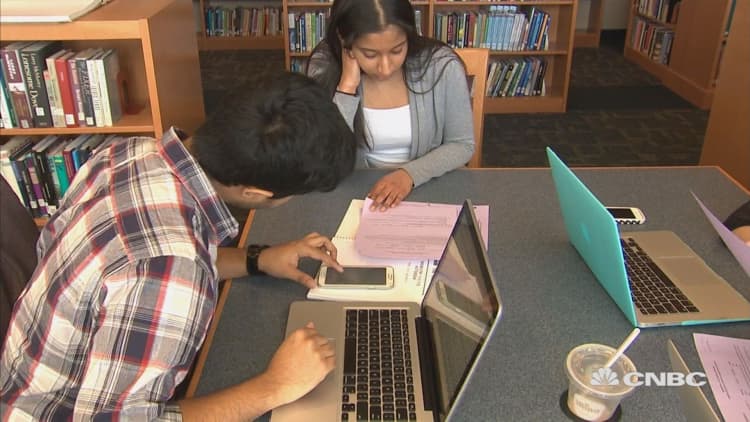There's good reason to file for financial aid early, but even procrastinators can still benefit.
June 30 is the last day families can file the Free Application for Federal Student Aid, or FAFSA, for the 2016-17 academic year. (Yes, the one that started last summer. Students worried about the upcoming 2017-18 term have until June 30, 2018, although it's still better to get your aid application in ASAP, especially if you're worried about that looming tuition bill.)

Three in 10 undergraduate students don't file the Free Application for Federal Student Aid at all, according to a 2016 brief from the National Center for Education Statistics based on 2011-12 data. Many said they could afford college without it, or expected they wouldn't qualify.
Changes in financial circumstance are often what spur people to file close to the deadline, said Mark Kantrowitz, vice president of strategy at college and scholarship search site Cappex.com.
"If you're filing this late, it usually means you need money," he said.
While 11th-hour filers have almost certainly missed out on aid from their college, some federal aid — including Pell Grants and federal student loans — can be awarded retroactively for eligible students, Kantrowitz said. (If you need to borrow, those loans typically have lower rates and better borrower protections compared to private loan options.)
That potential for retroactive aid isn't small change. Students who don't file the FAFSA forgo an average $9,741.05 in aid for that academic year, according to a study published in Research in Higher Education earlier this year. That includes an average $1,281 in Pell Grants, $2,439.50 in subsidized federal student loans and $1,986.65 in unsubsidized federal student loans.
Consumers weighing a last-minute FAFSA filing should leave themselves a few hours to complete the process ahead of the midnight Central time deadline. First-time FAFSA filers can usually expect to spend 55 minutes on the form, notes Edvisors.com, but that's not a complete picture of the effort.
Budget in extra time to collect the necessary documents and create an FSA ID if you don't already have one, said Kantrowitz. You'll also have to manually fill out more of the form: Earlier this year, security concerns prompted the IRS to take down its data retrieval tool — which had let FAFSA applicants import tax data into the forms. That tool is still unavailable.
Put in the time to check your work for mistakes, too.
"There are a lot of things that can go wrong," Kantrowitz said.




